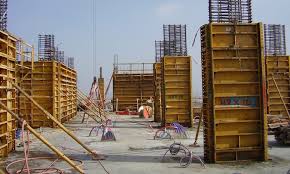Jul . 29, 2024 06:27 Back to list
Innovative OEM Solutions for Efficient Flat Slab Formwork Systems and Construction Practices
The Advantages of OEM Flat Slab Formwork in Construction
In the realm of modern construction, efficiency and innovation are paramount. One of the significant advancements in this field is the use of OEM (Original Equipment Manufacturer) flat slab formwork systems. These systems have become increasingly popular due to their ability to streamline the building process while enhancing structural integrity. This article explores the advantages of OEM flat slab formwork and how it is transforming construction practices.
Understanding Flat Slab Formwork
Flat slab formwork refers to a type of temporary support system used during the construction of flat slab structures. Unlike traditional beam-and-slab constructions, flat slabs eliminate the need for supporting beams by distributing loads directly across the slab itself. This not only simplifies the construction process but also maximizes usable space by minimizing obstructions. OEM flat slab formwork systems are designed to provide a high level of customization and adaptability to various project requirements.
Key Benefits of OEM Flat Slab Formwork
1. Enhanced Efficiency One of the most significant advantages of using OEM flat slab formwork is the speed of construction. These systems are designed for quick assembly and disassembly, allowing contractors to complete projects in a shorter timeframe. The prefabrication of formwork components means that they can be easily transported and set up on site, reducing labor time and costs.
2. Cost-Effectiveness Although the initial investment in OEM formwork systems may seem substantial, the overall cost savings become apparent over the life of the project. The ability to reuse formwork multiple times leads to lower material costs and waste. Additionally, the reduced labor hours associated with simplified assembly contribute to significant savings.
oem flat slab formwork

3. Improved Structural Integrity OEM flat slab formwork is engineered to provide superior support during the curing process, which enhances the strength and durability of the final structure. The even distribution of loads reduces the risk of cracking and instability, ensuring that the building meets safety and performance standards.
4. Versatility and Flexibility One of the standout features of OEM formwork is its adaptability to various design specifications. These systems can accommodate different thicknesses and spans, allowing architects and engineers to innovate without being constrained by traditional building practices. This flexibility also means that they can be used for various types of structures, from residential buildings to commercial spaces and industrial facilities.
5. Reduced Labor Requirements The ease of use and quick setup of OEM flat slab formwork systems lead to fewer labor requirements on site. This is particularly advantageous in an industry facing labor shortages. With less reliance on skilled labor for formwork setup and more straightforward procedures, projects can proceed more smoothly.
6. Sustainability As the construction industry becomes more environmentally conscious, OEM flat slab formwork offers a sustainable alternative. The ability to reuse formwork reduces the demand for new materials, thereby minimizing waste. Additionally, the efficient construction process reduces energy consumption and the carbon footprint of projects.
Conclusion
OEM flat slab formwork represents a significant evolution in construction methodologies. With benefits that include enhanced efficiency, cost-effectiveness, and improved structural integrity, it's clear that these systems are reshaping the way buildings are designed and constructed. As the industry continues to embrace innovation, the adoption of OEM flat slab formwork will likely grow, leading to faster, safer, and more sustainable construction practices. The future of building is undoubtedly being shaped by these intelligent solutions, ensuring that construction meets the demands of a rapidly changing world.
-
High-Quality U Head Jack Scaffolding – Reliable Scaffolding Jack Head Manufacturer & Factory
NewsJul.08,2025
-
High-Quality I Beam H20 Leading Timber Beam H20 Material Factory, Exporters & Manufacturers
NewsJul.08,2025
-
High-Quality Powder Coating Steel Formwork - Durable & Corrosion Resistant Solutions
NewsJul.07,2025
-
Inclined Column Formwork Supplier – Durable & Precise Solutions for Unique Structures
NewsJul.07,2025
-
High-Quality Water Stop Solutions Trusted Water Stop Company & Suppliers
NewsJul.07,2025
-
High-Quality Formwork Material Supplier Reliable Manufacturer & Factory Solutions
NewsJul.06,2025